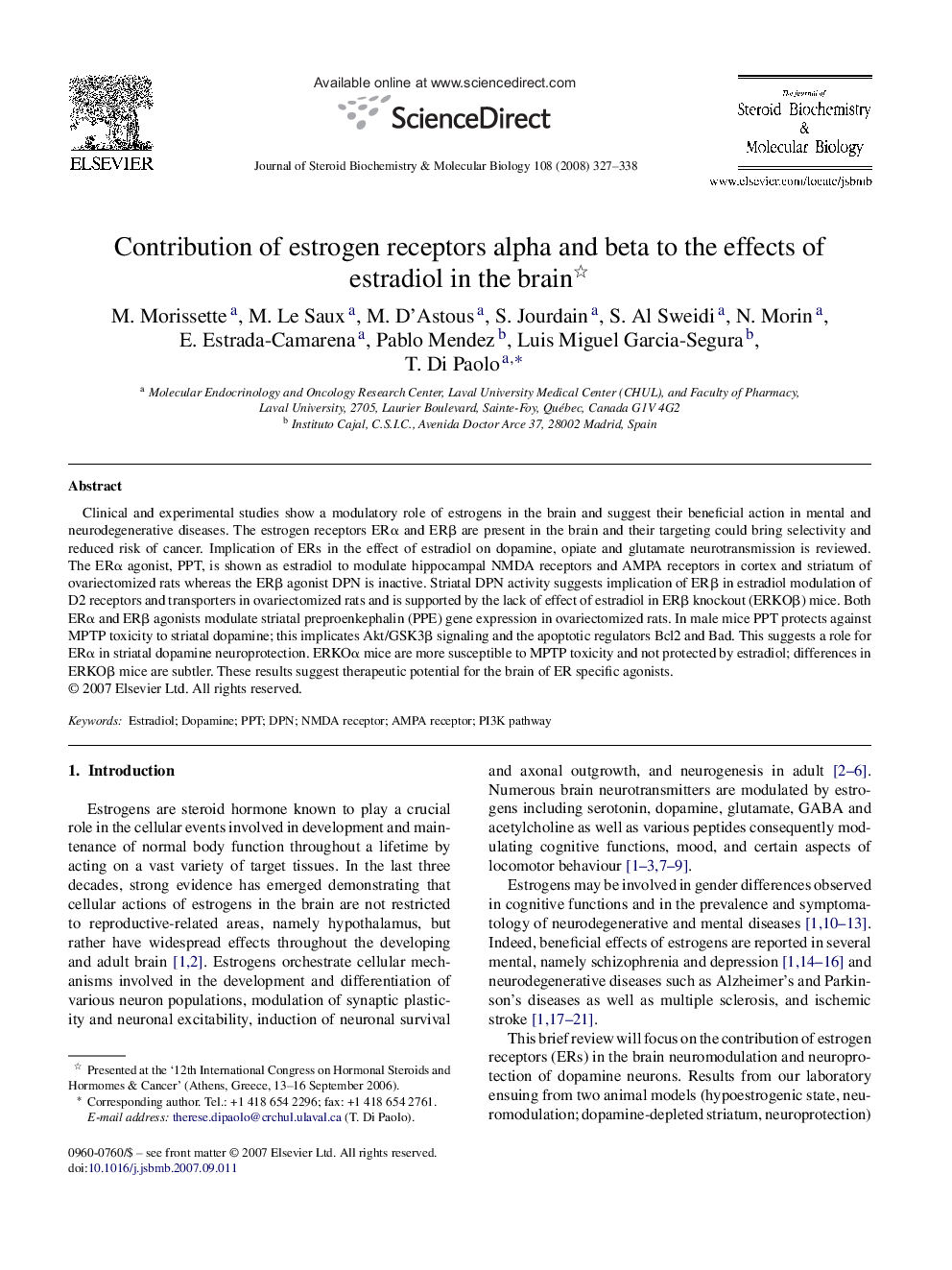| Article ID | Journal | Published Year | Pages | File Type |
|---|---|---|---|---|
| 1992151 | The Journal of Steroid Biochemistry and Molecular Biology | 2008 | 12 Pages |
Clinical and experimental studies show a modulatory role of estrogens in the brain and suggest their beneficial action in mental and neurodegenerative diseases. The estrogen receptors ERα and ERβ are present in the brain and their targeting could bring selectivity and reduced risk of cancer. Implication of ERs in the effect of estradiol on dopamine, opiate and glutamate neurotransmission is reviewed. The ERα agonist, PPT, is shown as estradiol to modulate hippocampal NMDA receptors and AMPA receptors in cortex and striatum of ovariectomized rats whereas the ERβ agonist DPN is inactive. Striatal DPN activity suggests implication of ERβ in estradiol modulation of D2 receptors and transporters in ovariectomized rats and is supported by the lack of effect of estradiol in ERβ knockout (ERKOβ) mice. Both ERα and ERβ agonists modulate striatal preproenkephalin (PPE) gene expression in ovariectomized rats. In male mice PPT protects against MPTP toxicity to striatal dopamine; this implicates Akt/GSK3β signaling and the apoptotic regulators Bcl2 and Bad. This suggests a role for ERα in striatal dopamine neuroprotection. ERKOα mice are more susceptible to MPTP toxicity and not protected by estradiol; differences in ERKOβ mice are subtler. These results suggest therapeutic potential for the brain of ER specific agonists.
